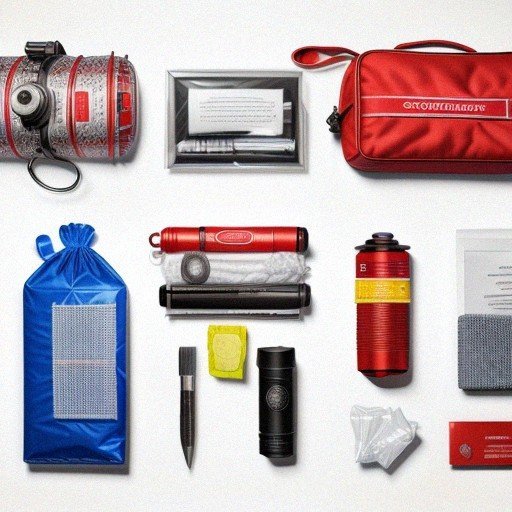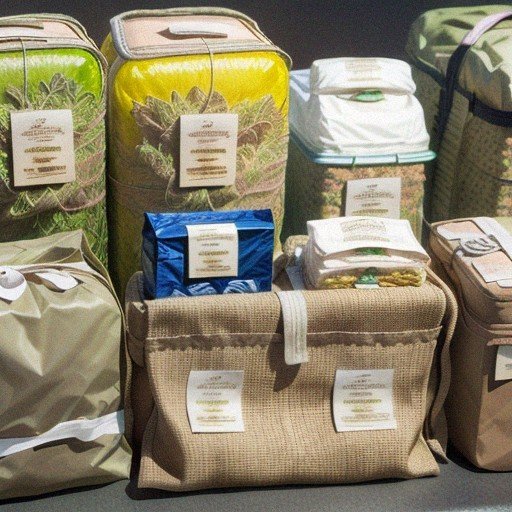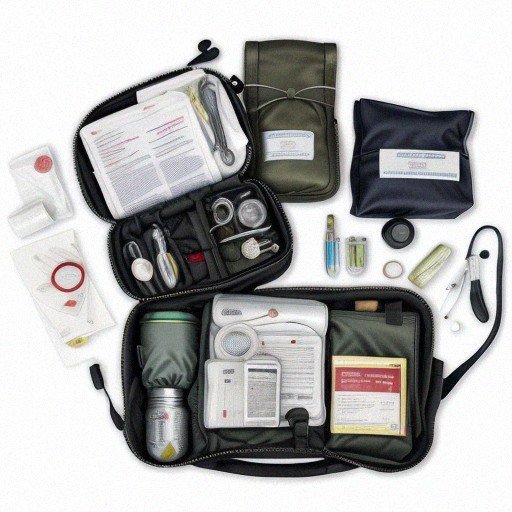Essential Emergency Survival Kit Ideas: Preparedness for any Crisis
In today’s uncertain world, being prepared for any crisis is not just a prudent decision but an essential one. Emergencies can strike unexpectedly, leaving us vulnerable and unprepared. That is why having an emergency survival kit filled with necessary supplies is crucial for ensuring the safety and well-being of ourselves and our loved ones in times of distress.
In this article, we will explore a comprehensive list of essential items that should be included in your emergency survival kit to help you become fully equipped to face any crisis head-on. From food and water provisions to communication devices and first-aid necessities, we will delve into various categories of essentials to ensure your readiness during challenging times.
Don’t leave your future up to chance – join us as we navigate through the vital components required for creating an effective emergency survival kit that guarantees preparedness when it matters most.
Food and Water: Stocking up on non-perishable food items and clean drinking water
Stocking up on non-perishable food items
When preparing for an emergency, it’s crucial to have a stockpile of non-perishable food items that can provide sustenance for you and your family. Non-perishable foods are those that have a long shelf life and do not require refrigeration or cooking.
- Canned goods: Include canned fruits, vegetables, beans, soups, and meats in your emergency kit. These provide essential nutrients and can be eaten cold if necessary.
- Dried foods: Consider adding dried fruits, nuts, beef jerky, granola bars, and dried pasta to your stockpile. These items are lightweight and easy to store.
- Shelf-stable milk: Opt for powdered milk or UHT (ultra-high temperature) boxed milk as they can be stored without refrigeration.
Clean drinking water is essential
In any crisis situation where normal water supply may be disrupted or contaminated, access to clean drinking water becomes vital. Storing enough water is crucial for survival.
- Water storage containers: Make sure to have sturdy plastic containers specifically designed for storing drinking water. Aim to store at least one gallon per person per day.
- Filtering devices: In case tap water becomes unsafe during emergencies such as natural disasters or pandemics when purification systems may not function correctly anymore; consider having portable filters like ceramic candle filters or UV light purifiers in your kit.
- Water purification tablets: An alternative solution would be including FDA-approved chlorine-based tablets in the emergency kit which can quickly kill harmful bacteria.
Remember that both food and water should be periodically rotated out of the emergency kit based on expiration dates indicated by manufacturers.

First Aid Essentials: Including bandages, medications, and basic medical supplies
First Aid Essentials
When preparing an emergency survival kit, it is crucial to include a well-stocked first aid kit. This will ensure that you are equipped to handle any minor injuries or medical issues that may arise during a crisis. Here are some essential items to include:
- Bandages: Stock your kit with various sizes of adhesive bandages, as well as sterile gauze pads and rolls for dressing wounds.
- Medications: Include over-the-counter pain relievers like acetaminophen or ibuprofen, antihistamines for allergies, and basic medications for common ailments such as coughs and colds.
Basic Medical Supplies
In addition to bandages and medications, there are several other basic medical supplies you should have in your emergency survival kit:
- Thermometer: A digital thermometer is essential for monitoring body temperature during illness or infection.
- Tweezers: These can be used to remove splinters or debris from wounds.
- Gloves: Disposable gloves provide protection against contamination when administering first aid.
By including these first aid essentials in your emergency survival kit, you will be better prepared to address minor injuries and health concerns during any crisis situation.

Shelter and Warmth: Tools and materials to create a safe and comfortable space during emergencies
Shelter and Warmth
During emergencies, having access to shelter and warmth is crucial for staying safe and comfortable. Here are some tools and materials that should be included in your emergency survival kit:
- Tents or tarps: These can provide quick and easy protection from the elements. Make sure you have a lightweight but durable tent or tarp that is large enough to accommodate everyone in your group.
- Sleeping bags or blankets: To stay warm during cold nights, pack each person their own sleeping bag or extra blanket. Look for ones that are designed for low temperatures.
- Emergency thermal blankets: These thin, lightweight blankets reflect body heat back towards the individual, helping to prevent hypothermia.
- Waterproof matches or lighters: Having a reliable way to start a fire is essential for cooking food, boiling water, and keeping warm. Pack waterproof matches or lighters in a secure container.
- Firewood or fuel tablets: Ensure you have an adequate supply of firewood or fuel tablets to sustain fires throughout the emergency situation.
Remember to regularly check your shelter materials before an emergency occurs to ensure they are still in good condition.
Communication and Lighting: Devices for staying connected and sources of light during power outages
During a crisis, communication becomes crucial. It’s important to have devices that can keep you connected with the outside world when traditional means fail. One essential item to include in your emergency survival kit is a hand-crank radio. This device doesn’t require electricity because it generates its own power through manual winding. With a hand-crank radio, you can stay updated on news, weather updates, and emergency broadcasts.
In addition to a hand-crank radio, having reliable lighting is essential during a power outage. Flashlights are a must-have item in any emergency survival kit. Look for flashlights that are durable and waterproof so they can withstand tough conditions. Also, opt for ones with long battery life or the ability to be powered by rechargeable batteries or solar panels.
Another useful item for lighting during a blackout is portable LED lanterns. These provide bright illumination while being energy-efficient and easy to carry around. Some even come with built-in charging ports for charging your electronic devices if needed.
Tools and Equipment: Necessary tools for survival, such as a multi-tool, rope, and a fire starter
Tools and Equipment:
When it comes to survival, having the right tools can make all the difference. A multi-tool is an essential item to include in your emergency kit. With various functions like a knife, screwdriver, and pliers, it can help you tackle a wide range of tasks. Rope is another versatile tool that should be part of your kit. Whether you need to secure shelter or create a makeshift clothesline, having durable rope on hand will prove invaluable.
A fire starter is also crucial for survival situations. It allows you to quickly ignite a fire for cooking food or staying warm during cold nights. Consider packing waterproof matches or a reliable lighter in your emergency kit. Additionally, including some fire-starting materials such as tinder or cotton balls soaked in petroleum jelly will ensure that starting a fire becomes quick and hassle-free when needed most.
Having these necessary tools ensures that you are equipped with practical solutions for various challenges that may arise during emergencies without adding unnecessary weight to your pack.
Personal Hygiene and Sanitation: Items like soap, toilet paper, and hand sanitizer to maintain cleanliness and prevent disease
Personal Hygiene and Sanitation
Good personal hygiene is crucial during any crisis to prevent the spread of disease. Here are some essential items to include in your emergency survival kit:
- Soap: Pack a bar of soap or small bottles of liquid soap for handwashing purposes, as well as maintaining cleanliness overall.
- Toilet paper: In times when access to plumbing may be limited or unavailable, having an ample supply of toilet paper ensures basic sanitation needs are met.
- Hand sanitizer: When water is scarce or not readily available, hand sanitizer with at least 60% alcohol content can effectively kill germs and bacteria.
Remember, maintaining personal hygiene not only promotes good health but also helps maintain a sense of normalcy and well-being during challenging situations.

Emergency Preparedness for Pets: Essential supplies to ensure the well-being of your furry companions during a crisis
When putting together your emergency survival kit, it’s important not to forget about your pets. They too need essential supplies that will keep them safe and healthy in times of crisis. Here are some items you should include:
- Food – Stock up on at least a week’s worth of food for your pet. Make sure it is non-perishable and easy to store.
- Water – Just like humans, pets need access to clean water during an emergency. Have enough water stored away specifically for your pet’s needs.
Having these basic provisions will go a long way in ensuring the well-being of your furry friends when disaster strikes. Remember, they rely on us for their safety, so being prepared means looking out for them too!
Important Documents and Cash: Safeguarding important paperwork and having cash on hand for emergencies
Protecting Important Documents
In the face of a crisis, it is crucial to safeguard important paperwork. Keep essential documents such as identification papers, passports, insurance policies, and property deeds in a secure and easily accessible location. Consider investing in a fireproof and waterproof safe or a lockable portable container for added protection.
Emergency Cash on Hand
Having cash readily available during emergencies can be invaluable when other forms of payment may not be an option. Keep a small amount of cash in your emergency survival kit to cover immediate expenses such as transportation or purchasing essential items.
It is advisable to have a mix of denominations, including smaller bills for convenience and larger ones for emergencies that require large transactions.
Importance of Safeguarding
By taking precautions to protect important documents and having emergency cash on hand, you ensure that vital information remains intact during times of crisis.
These measures allow you to promptly provide identification or access funds when traditional means are disrupted by unforeseen circumstances like natural disasters or power outages.
Taking the time now to organize these critical items will alleviate stress and make handling any unexpected situation more manageable.







